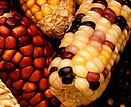 |
 |
|||||||||
|
Policies Toward GM Crops In India cont.,V. Food Safety and Consumer Choice As of 2000, India had not yet developed an explicit consumer food safety policy toward GM crops. This partly reflected India's status as a low-income developing country where many poor consumers were still concerned as much about the availability or the price of food as about its exact characteristics or ingredients. Yet this also reflected India's official claim that GM foods were not yet being sold in the country. In this regard, India was in a similar position to Kenya. If the Government of India begins approving GM food crops (not just cotton) for commercial production, it may need to develop a more explicit food safety and consumer policy as an accompaniment. Consumer protection laws have been slow to emerge overall in India, partly reflecting the nation's poverty yet also partly reflecting a large role played by the state itself in providing consumer goods through state owned industries. The state has historically been reluctant to sponsor a strong consumer protection movement partly for fear of liabilities to its own public industries. The notion of protecting consumers by giving them an "informed choice" has also been slow to develop in India, partly because India’s citizens and its government officials have historically been comfortable with a more direct regulatory approach. Consumer advocates in India tend to focus more on issues of state regulatory failure rather than informed choice. In the food safety area, for example, the state is routinely held accountable by opposition parties or through the media for occasional failures to prevent the contamination or adulteration of processed and packaged foods. As noted above, a 1998 dropsy outbreak in Delhi linked to contamination of edible oils prompted a quick tightening of packaging rules. Partly because so much food consumption in India has traditionally been satisfied from unpackaged natural ingredients, consumer fears regarding adulteration of packaged foods remain understandably widespread. According to one survey, 60 percent of Delhi’s population fears that branded milk could be adulterated, and hence unsafe to drink (Rao 1999). Because India does not yet officially grow or import any GM foods, it has been able to continue operating within food safety policies that draw little or no distinction between GM and non-GM food ingredients. India's still operative 1954 Prevention of Food Adulteration Act predates the GM crop revolution and does not mention transgenic entities. In 1998, however, India made at least one adjustment to the GM crop revolution when it revised its biosafety approval guidelines to require that GM seeds, plants and plant parts be separately screened for toxicity and allergenicity (DBT 1998). By introducing a separate regulatory procedure for GM crops, this new RCGM guideline gives India a permissive rather than a fully promotional safety policy toward GM foods. The protocols published in the revised guidelines do not set a higher food safety standard because of the GM nature of the products; they were developed by RCGM through consultation with conventional industrial toxicologists and scarcely go beyond the testing that might be appropriate for judging the safety of pesticide residues.6 Also, the new procedures allow for test results generated in other countries to be used in India, on the grounds that food safety testing does not have to be site specific. This means the data used by FDA to give approval to a GM food in the United States could presumably be re-used for the same purpose in India. The process thus can be a quick one, and RCGM officials have already indicated informally that in the GM mustard application (the first food crop application going through India's approval system) their review of the information submitted has already found no new food safety risks (Ghosh and Ramanaiah 2000). Labeling policies in India have been a moot question until now because of the nation's nominal GM-free status and because most food consumption continues to be satisfied through home or street preparations of natural foods that are never packaged at all, let alone carefully labeled. Foods grown in India for export purposes must be labeled according to the policies of the importing countries, yet the nation's GM-free status has transformed this requirement into something of a competitive advantage for the country rather than a burden. Without any costly market segregation, all of India's soy or castor oilseed cake destined for Europe and Japan can be labeled "GM free." Labeling requirements are likely to be imposed as soon as GM food crops (as opposed to fiber crops like cotton) are released by GEAC for commercial planting by India's own farmers. Transgenic pharmaceutical products in India that have been deregulated for sale be GEAC already must be labeled GM. Anticipating the GM labeling problem for foods, India’s Ministry of Food Processing Industries has approached DBT seeking advice, and India's Ministry of Health and Family Welfare has approached both DBT and the Codex Alimentarius in Rome asking how the nation’s 1954 Prevention of Food Adulteration Act can be adjusted to take GM ingredients into account. If and when GM foods do officially come onto the market in India, DBT can be expected to advocate labeling requirements that are permissive rather than precautionary, to avoid a need for full market segregation. 6. The tests required now include in-vitro receptor binding assays and animal model testing for toxicity, and for allergenicity in-vitro sero-panel assays, animal model testing, and comparisons to known allergens, plus quantitative estimates of transgenic proteins as a percentage of total proteins in different plant parts at different ages (Ghosh and Ramanaiah 2000).
|
|